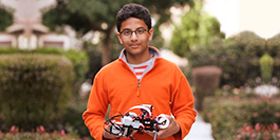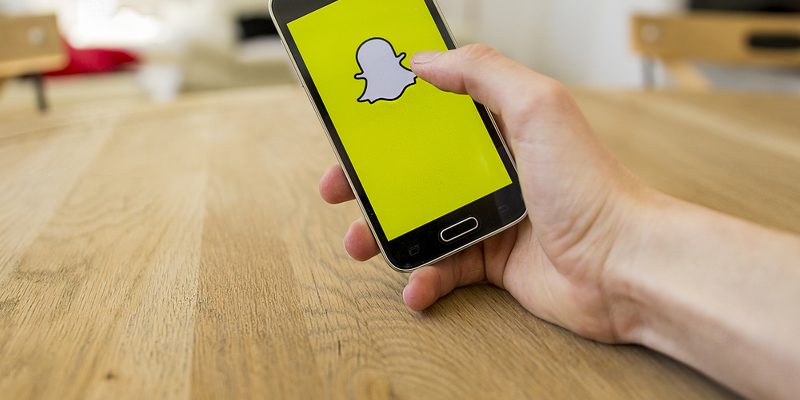Shubham Banerjee, the world's youngest entrepreneur to receive VC funding, on his life changing invention
Bootstrapping funds for their startup is a universal entrepreneur dilemma. What made it unique for Shubham Banerjee was that his funds were bootstrapped from his pocket money. In February 2014 then twelve year old Banerjee set about creating Braigo- a Lego Braille printer that dramatically reduces the price of a printer from more than $2,000 to $350 for education, teaching and home-use purposes. By the time he turned thirteen he had secured funding worth hundreds of thousands of dollars from Intel, at the Intel Global Capital Summit. While Banerjee had put his heart and soul into creating the Lego prototype of Braigo (coined from Braille and Lego), he is happy that with this funding he can concentrate on mass producing the most optimum version of the machine possible. All the while attending school of course. With 285 million visually impaired people living worldwide, and 90 per cent of them from developing nations, Banerjee's invention is poised to eradicate one of the most significant challenges faced by the blind.

Braigo Labs Inc. Shubham Banerjee @ Intel Capital Summit 2014
In February of this year he was tinkering with his Lego set with the idea of helping visually impaired people all over the world. Now he is the CEO of Braigo Labs, a Silicon Valley based startup ‘with a twist’ whose motto reads: Our mission is to bring "Humanely Optimized" technologies that are innovative, affordable, simple and catering to solving life's problem. It is a marvellous achievement but Banerjee is just getting started. His father proudly tells me that he has a couple of other patents pending (all relating to Braigo at the moment) and his drawing boards are teeming with ideas.
Shubham Banerjee opens up to YourStory about why he created Braigo, being the youngest tech entrepreneur in the world to receive VC funding, the challenges of setting up his own company at thirteen, his future plans and why being famous has not changed his life much.
You said that you have been playing with Lego since you were two. What is it about them that you like so much?

I like that you can be creative with Lego. You can practically build anything you want. It does not necessarily have to be built according to the instructions. It was really fun to play with when I was small, but as I grew older I found it to be as useful for more complex robotic projects.
Up till creating Braigo, what were some of the most complex things you had built using Lego?
I hadn't really built anything professional. Probably just planes and cars that I kind of rebuilt.
What was your life like before you became famous?
My life is pretty much the same that it was before, except I have interviews from time to time.
I have a little sister. She is very cute. My parents, from a young age, emphasized on helping people and doing meaningful work and that is where the idea of inventing Braigo stemmed from.

My hobbies are playing guitar and football (American football he clarifies). I like school and all the subjects. I also like debating. I actually have a debate tournament coming up Saturday.
What was the process of creating Braigo? Was there an AHA moment when the idea dawned?
BRAIGO - Full building instructions
In December I received a flyer that was asking for donations for the blind. Then I randomly asked my parents, "How do blind people read?" They said, "Go google it." And I did. What I found disturbed me greatly. When I found about the Braille language, I came to know how much Braille printers cost. It was $2000 onwards. That seemed too high, especially for people living in developing nations.
I wanted to build on that would cost much much less and I did that through two projects. First one was a Lego braille printer which was pretty fun to do. It was just a proof of concept, saying that I can do this. The second one was with Intel's new chip called Edison. That one's a real consumer product. It will go into the market (beams happily).
This started as a simple home project. How did you get it out there?

The chronology is really confusing for me. I presented Braigo at my school science fair project. Then I went to a bigger science fair - Synopsis- where I won the first prize. I guess after that it started picking up a lot.
Ever since Braigo hit the news there has been as much focus on your age and how young you are as on your invention. What is your take on that? Are you indifferent to it, hate it, love it?
I feel happy that I am the youngest person ever to receive VC funding, especially from a big company like Intel. But it is not that surprising for someone, even as young as me, to be able to do big things in Silicon Valley. It’s filled with smart people who have helped me and there are so many opportunities here for anyone who wants to create something. I am very privileged to be living here and having the chances I have had.
What has been some of the best moments since Braigo went live? There must have been many, but what holds the most personal significance for you?
I went to the White House and saw Barrack Obama speak. That was pretty awesome. I also met a lot of interesting people like Dale Dougherty, the founder of Maker Faire. I also met Bill Nye, the Science Guy. I also got to meet Soren Torp Laursen, the president of Lego. That was a big moment.
What did he say to you?
Actually I didn't go to find him. He came and found me. He told me he found me impressive and really liked what I was doing. He is such a cool guy.
Can you read Braille?
I cannot read Braille. If I need to look up something specific, I can always google it. I know how to read a few lines here and there though.
Tech innovations intimidate even seasoned entrepreneurs. What is fascinating here is that you, being twelve, without any background in Braille and with just your plaything, have created a life changing object. It goes to show how simple innovation really is. What is your philosophy about that?
Einstein said, "Everything should be as simple as possible. But not simpler." The hardest part was prototyping my product. Sometimes the parts I wanted was not available. Other times I had to break it and remodel. Then break and make again. The process was difficult but the idea is more important than the technique. I never wanted to make any money out of this. All I wanted was to help the visually impaired. If you do good, you get good. It is what my parents taught me.
When you put up your videos on Youtube on how to make Braigo at home, you said that Maxwell (another thirteen year old) took your design and improved upon it. Ursula K. Le Guin said, "The creative adult is the child who survives." Do you think adult entrepreneurs have a harder time tapping into their creativity or that it flows more easily for people like you and Maxwell, given your age?
I don't know. I am quite young and haven't really experienced the world that well. All I wanted to do was help people and then this got so big. Now I have started making a company. I am doing something I love and I guess that is important.
Shiva Ayyadurai, another famous Indian American entrepreneur, said that India can never produce a Steve Jobs or Mark Zuckerberg. Not the way things are run now in the country. Do you agree with that? Do you think you could have created Braigo had you been based in India rather than the Silicon Valley?
I think what he said is very true. In Silicon Valley everyone is willing to help you. There are an immense number of opportunities. There are so many smart people here. I know that there are terrifically smart people in India as well but the startup ecosystem thrives on community support here. People don't want to pull you down here. They want to help you achieve your goal. I could not have done in India what I did here.
What was the hardest part about creating your company? What have you learnt in the process?
I could not set up the company all by myself. My dad had to barge in. But I think the hardest part would be the paperwork, the lawyers and all that.
Everyone is celebrating what a great success you are and what a fantastic future you have ahead of you. But have you experienced any failures along the way?
Oh yeah. Lots of them. There have been uncountable failures during creating the prototype. Also the online trolls really get me down. Comments that I am fake, my invention is fake. I try not to care about that kind of stuff.
How do you fit school, extra-curricular activities and being a CEO?
I have specific times for interviews, homework, lab work and the company. It’s hectic but it all works together. My parents help me out a lot.
I know you said that you are young and haven't seen the world. But I think that's a great advantage because you haven't learn to be afraid. What's your advice on what it takes to be a creator?
You don't get big from trying to make money. Do something to help people. For other kids I would like to say, do something original. Don't do things that have been done before. Things like will this plant grow in salt water. Do something that's not there.
What are your plans for the future?
I am about to enter high school. I plan on finishing college. I want to work in the field of medicine or engineering.









![[Funding alert] Workflow automation app Delightree raises $3M in seed round](https://images.yourstory.com/cs/2/b3bfb136ab5e11e88691f70342131e20/Delightree-1596266034279.jpg)